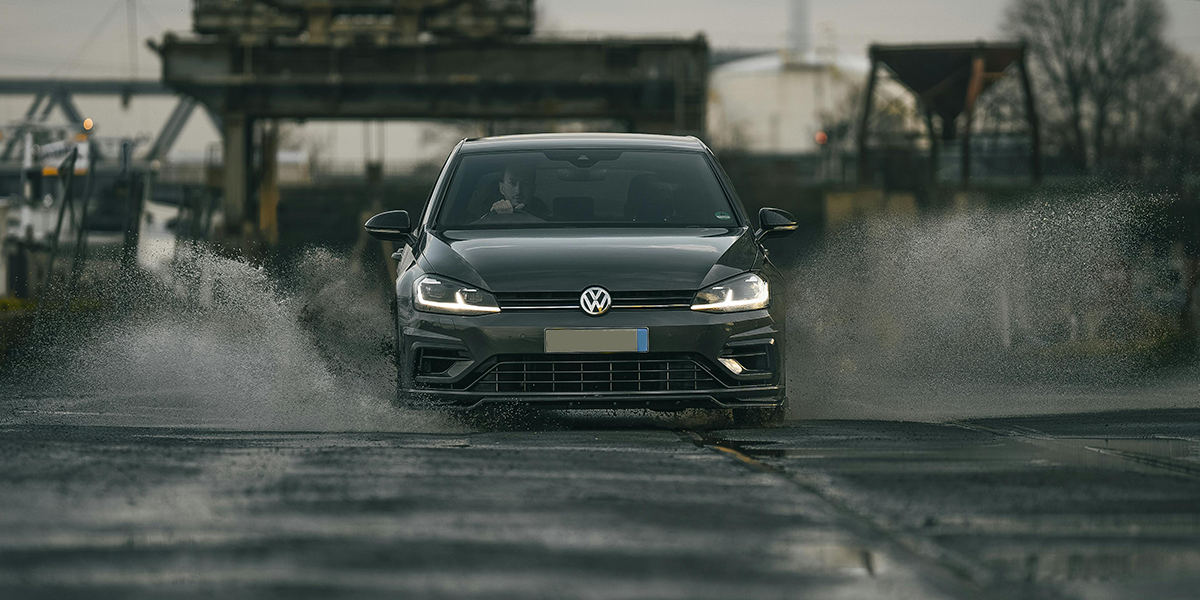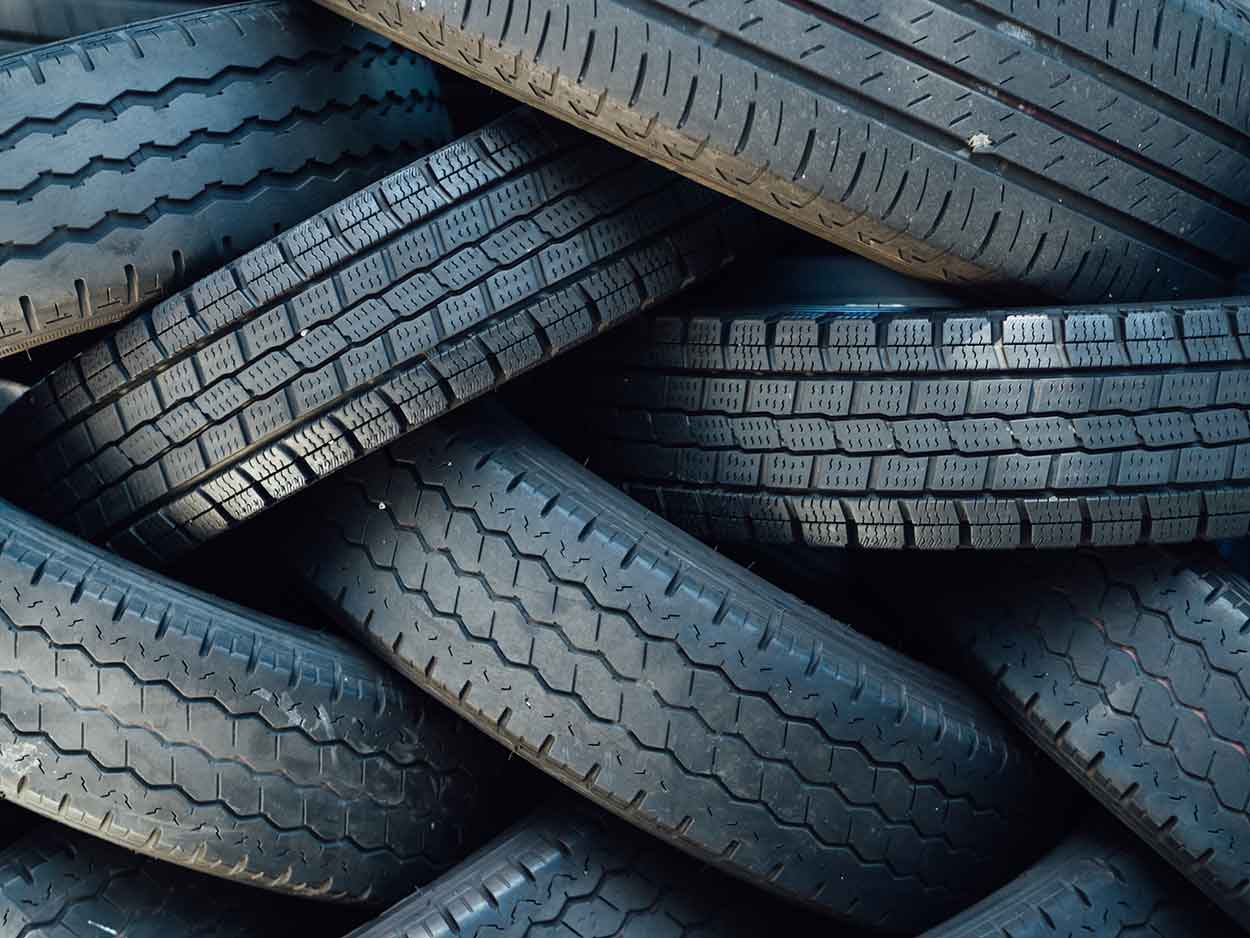Driving in the rain can be a challenge for even the most experienced motorists. In the UK, where wet weather is all too familiar, knowing how to navigate the roads safely during a downpour is essential. Whether you're facing a light drizzle in Durham or a torrential rainstorm in Ramsgate, these tips will help ensure you stay safe while driving in the rain.
Check your car
Before heading out in rainy weather, make sure your car is equipped to handle the conditions. Check that your tyres have enough tread depth to prevent aquaplaning – a scenario where water builds up under the tyre and causes loss of traction. Remember, your tyres are the only point of contact between the road and your car, so it’s critical to keep them in good condition.
The minimum tread depth for car tyres in the UK is 1.6mm. Anything less not only compromises your safety but puts you at risk of a £2,500 fine and three penalty points – for every tyre that doesn’t meet the minimum requirements. So, if all four tyres are subpar you could be hit with a £10,000 fine and potentially have your licence revoked. As well as tyres, ensure your headlights, taillights and windscreen wipers are all functioning properly to provide maximum visibility and safety when driving in the rain.
Turn on your headlights
In the UK, it’s required by law to turn on your headlights when visibility is seriously reduced. This generally kicks in when you can’t see for more than 100 metres, roughly 330 feet. Using your headlights helps you see the road more clearly and, crucially, makes you more visible to other motorists when driving during rain. Not sure if visibility is bad enough to warrant switching on your headlights? When in doubt, err on the side of caution and flick them on!
Maintain a safe stopping distance
When driving in rain, it’s important to increase the space between you and the vehicle in front. This gives you more time to react if the car ahead stops suddenly when driving in the rain. It’s advised to follow the six-second rule instead of the usual two-second rule to provide ample stopping distance on slick roads.
Slow down
Speed limits are designed for ideal conditions, and rain isn’t one of them. Reduce your speed to compensate for reduced traction and visibility. Slowing down also helps prevent aquaplaning as the tyres get more contact with the road when you drive slower.
Avoid heavy braking
Try to avoid sudden stops when driving in the rain. Use the gears to slow down if possible, or gently apply the brakes early to signal to drivers behind you that you’re slowing down. Braking suddenly can lead to skidding, especially on wet roads. Results can be even more dangerous in icy conditions.
Be wary of standing water
Driving through standing water can cause hydroplaning and potential loss of control. If you encounter standing water and can’t safely avoid it, drive through it slowly and steadily. Maintain a firm, two-handed grip on the wheel and avoid making sudden steering manoeuvres.
Use air conditioning to defog
Rain doesn’t just compromise visibility outside your car. Moisture can cause your car’s windows to fog up from the inside and make it difficult to see clearly. To prevent this, use your car’s air conditioning to defog the windows and maintain visibility. The A/C helps remove excess moisture from the air inside your car and keep the windows clear while driving in the rain.
Plan your travel
If heavy rain is forecast, plan your travel accordingly. Avoid starting your journey until it clears up if possible. If you can’t avoid driving during rain, allow extra time for your journey and plan routes that avoid areas prone to flooding.
Be cautious of freezing rain
During colder months it’s worth checking the forecast for the chance of freezing rain, which can create a thin, almost invisible layer of ice on the road known. This slick layer is called black ice and is extremely slippery, not to mention dangerous as it’s hard to detect until you are already on it. If the temperature is near freezing and it’s raining, drive as if you’re on ice – slow, cautious and with no sudden turns or stops.
Research road conditions
Use traffic apps or listen to local radio stations for real-time updates on road conditions when driving during rain. Up-to-the-minute information can be invaluable, especially in wet weather when road conditions can change rapidly. Being forewarned about potential hazards can allow you to take proactive measures, such as rerouting your trip to avoid affected areas. As well as helping you stay safe, a proactive approach to road conditions can help minimise delays and ensure a stress-free journey.
Drive with confidence with My Car Credit
Driving in the rain can be challenging but with the right mindset and a good understanding of how to minimise the risks, it doesn’t have to be a nerve-wracking experience. Remember, good preparation, adjusting your driving style to suit the weather conditions and being aware of your surroundings are key to maintaining road safety during rain.
A sturdy vehicle also helps, which is where My Car Credit comes in. From tough-as-nails models like the Land Rover Defender, Jeep Compass and Toyota Highlander to urban runners like the Volkswagen Golf, Mini Cooper and Fiat Panda, a reliable vehicle can make all the difference when driving during rain. Our expert team can help secure you a deal on car finance so you can drive with confidence, whatever the British weather throws at you.
Considering an upgrade? Use our car finance calculator to see what’s affordable for you.
Rates from 9.9% APR. Representative APR 10.9%
Evolution Funding Ltd T/A My Car Credit
Require more help?
Got a question you can’t find the answer to, or need some advice and guidance around taking out car finance? Our Car Credit Specialists are friendly, experienced, and here to help so get in touch today!




